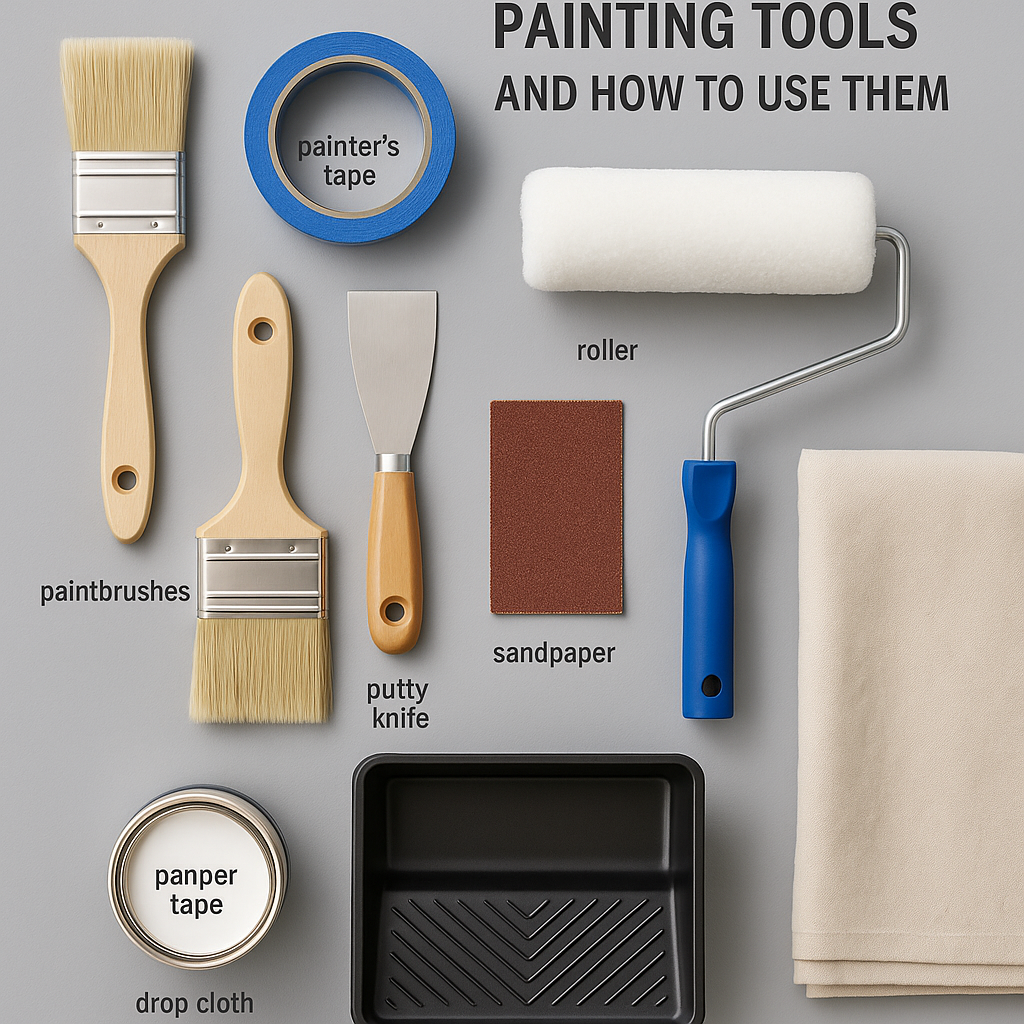Whether you’re refreshing a single room or tackling a full home makeover, the right tools make all the difference between a flawless finish and a frustrating mess. Understanding each tool’s purpose can save you time, reduce waste, and ensure professional-quality results.
Here’s a breakdown of the most common painting tools every homeowner should know — and how to use them effectively.
1. What Are the Essential Painting Tools for Every Project?
A successful paint job typically requires these basics:
-
Paintbrushes – For detail work, corners, and trim.
-
Rollers – For covering large surfaces evenly.
-
Painter’s Tape – To protect edges and create clean lines.
-
Drop Cloths – To shield floors and furniture from drips.
-
Paint Trays – For loading rollers efficiently.
-
Extension Poles – To reach high walls or ceilings safely.
-
Sandpaper – For smoothing surfaces before painting.
- Putty Knife – For filling small holes or cracks.
You can explore high-quality tools and accessories in Randall’s paint collections
2. How Do You Choose the Right Paintbrush?
Different brushes serve specific purposes:
-
Angled Brushes: Ideal for cutting-in around trim or corners.
-
Flat Brushes: Perfect for wide, smooth surfaces like doors or cabinets.
- Small Detail Brushes: Used for intricate work or touch-ups.
Tip: Synthetic bristles pair best with latex paints, while natural bristles work well with oil-based paints.
3. What Size Roller Should I Use?
The roller size depends on your surface:
-
9-inch rollers – Standard for most walls and ceilings.
-
Mini rollers (4-inch) – Great for trim, furniture, and small touch-ups.
-
Thick nap rollers (¾ inch) – Designed for textured surfaces like brick or stucco.
- Short nap rollers (¼ to ⅜ inch) – Ideal for smooth drywall.
Randall’s experts can help you choose the perfect roller texture based on your wall surface through our services
6. Why Is Surface Preparation So Important?
Proper prep determines the longevity of your paint.
Use sandpaper to smooth rough patches, and fill gaps with spackling paste using a putty knife. Wipe down walls to remove dust before painting.
For professional prep guidance, consult Randall’s painting services
7. What Are Extension Poles Used For?
Extension poles attach to rollers, making it easier to:
- Reach ceilings and tall walls
- Maintain even coverage
- Reduce fatigue from ladder use
Choose adjustable aluminum poles for strength and flexibility.
8. How Do I Clean My Painting Tools?
-
Latex paints: Rinse brushes and rollers with warm soapy water.
-
Oil-based paints: Use mineral spirits or paint thinner.
Dry tools thoroughly before storing them in a cool, dry place to prevent damage.
9. What Advanced Tools Can Improve My Painting Results?
Experienced painters often use:
-
Paint edgers for perfect lines near ceilings.
-
Sprayers for large or textured surfaces.
- Paint grids to evenly load rollers inside 5-gallon buckets.
For professional-grade equipment, check out Randall’s painter order formor visit our store for expert advice.
10. Can I Rent or Borrow Painting Tools Instead of Buying?
If you’re painting infrequently, renting can be a great cost-saving option.
Randall’s team can guide you on which tools are worth investing in versus renting.
Contact our experts via the Contact Uspage for recommendations tailored to your project size and budget.
Having the right tools—and knowing how to use them—can transform your painting experience from stressful to seamless. Whether you’re painting walls, furniture, or trim, Randall’s offers everything from premium brushes to eco-friendly paints to help you get the job done right.
Explore our collectionsor stop by one of our Ottawa stores for personalized guidance.
